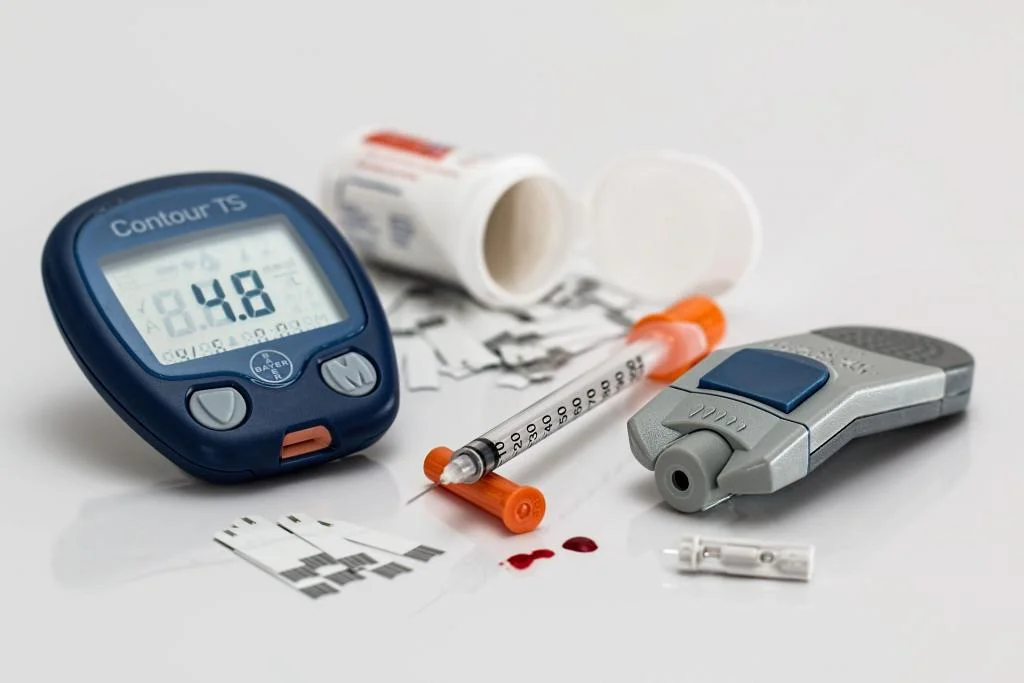
Table of Contents
Diabetic dry feet, a common complication of diabetes, arises from the decreased ability to retain moisture in the skin due to high blood sugar levels. Managing this condition is crucial as it can lead to more serious complications if not properly cared for.
Understanding Diabetic Dry Feet
Definition and Symptoms
Diabetic dry feet occur when prolonged high blood sugar levels cause nerve damage and poor circulation, leading to dry, cracked skin on the feet. Symptoms include rough, peeling skin, itchiness and in severe cases, cracks that can become infected.
How Diabetes Affects Foot Health
Diabetes primarily affects foot health by impairing nerve function and blood flow, making it hard for the body to maintain moist and healthy skin. This can lead to a range of complications from dry skin to ulcerations.
Causes of Diabetic Dry Feet
High Blood Sugar Impact
Consistently high blood sugar levels damage the body’s nerves and blood vessels, which is crucial in supplying moisture and nutrients to the skin.
Nerve Damage and Circulation Issues
The nerve damage (neuropathy) reduces sensation in the feet, preventing those with diabetes from feeling pain caused by dry, cracked skin. Poor circulation also means less oxygen and nutrients reach the feet, hindering healing and moisture retention.
Lifestyle and Environmental Factors
Factors such as inadequate hydration, poor diet, and unsuitable footwear can exacerbate dry feet. Environmental factors like cold weather or high heat can also increase skin dryness.
Preventing Diabetic Dry Feet
Daily Foot Care Routine
Establishing a daily foot care routine is essential. This includes inspecting feet daily for cuts, sores or any signs of infection, keeping the feet clean and dry, and moisturizing regularly to prevent dry skin.
Importance of Controlling Blood Sugar
Maintaining controlled blood sugar levels is crucial as it helps minimize the nerve damage and circulation issues that lead to dry feet.
Proper Footwear Choices
Wearing the right footwear is vital for preventing injuries and keeping the feet in good condition. Shoes should be comfortable, provide good support and not cause pressure points.
Home Remedies for Diabetic Dry Feet
Hydration and Moisturizing Tips
Keeping the whole body hydrated helps maintain skin health. Applying moisturizer immediately after bathing can lock in moisture.
Natural Oils and Their Benefits
Natural oils such as coconut oil, olive oil, or almond oil can be effective moisturizers that nourish the skin and provide necessary fats.
DIY Foot Scrubs and Soaks
Homemade scrubs using sugar or oatmeal can gently exfoliate the dead skin. Soaking feet in lukewarm water with Epsom salt can help soothe feet and reduce dryness.
Medical Treatments
When to See a Doctor
It’s important to consult a healthcare provider if there are signs of infection, severe cracks, or if home remedies do not improve the condition.
Prescribed Medications and Creams
A doctor may prescribe topical ointments or antifungal medications depending on the severity of the symptoms.
Advanced Treatments and Therapies
For severe cases, treatments like therapeutic ultrasounds or laser therapy might be recommended to improve circulation and skin health.
Lifestyle Adjustments
Dietary Changes to Improve Skin Health
Eating a balanced diet rich in vitamins and minerals can significantly improve skin health. Foods high in Omega-3 fatty acids, such as fish, flaxseeds and walnuts, are particularly good for maintaining healthy skin.
Exercise to Enhance Circulation
Regular exercise helps improve circulation, increasing the blood flow to the legs and feet, which is essential for skin health and moisture retention.
Smoking Cessation and Its Benefits
Smoking impairs circulation and worsens complications from diabetes, including dry feet. Quitting smoking can dramatically improve overall health and the condition of the feet.
Technological Innovations in Foot Care
Moisture-Wicking Socks and Specialized Footwear
Socks made from fabrics that wick moisture away from the skin can keep feet dryer and healthier. Specialized diabetic shoes are also available to reduce the risk of foot injuries and improve comfort.
Home Use of Medical Devices for Foot Care
Simple devices like electric massagers or foot spas can improve blood circulation and help maintain healthy feet at home.
Apps and Gadgets for Monitoring Foot Health
Technology such as apps that remind users to check their feet and track changes can be instrumental in preventing complications.
Expert Insights
Interviews with healthcare professionals emphasize the importance of early detection and regular foot care to prevent diabetic dry feet. They recommend keeping in regular contact with a healthcare provider to manage the condition effectively.
Conclusion
Managing diabetic dry feet requires a comprehensive approach that includes proper daily care, lifestyle adjustments, and medical treatment when necessary. Early intervention and regular monitoring are key to preventing serious complications.
FAQ
What are the first signs of diabetic dry feet?
The first signs can include unusually dry skin, scratches or cuts that heal slowly, and discomfort or itching.
How often should someone with diabetes inspect their feet?
It’s recommended to inspect the feet daily to catch any potential issues early.
Are there any over-the-counter products that can help?
Yes, several over-the-counter moisturizers are specifically formulated for diabetic dry skin. Consult with a pharmacist or healthcare provider for recommendations.



